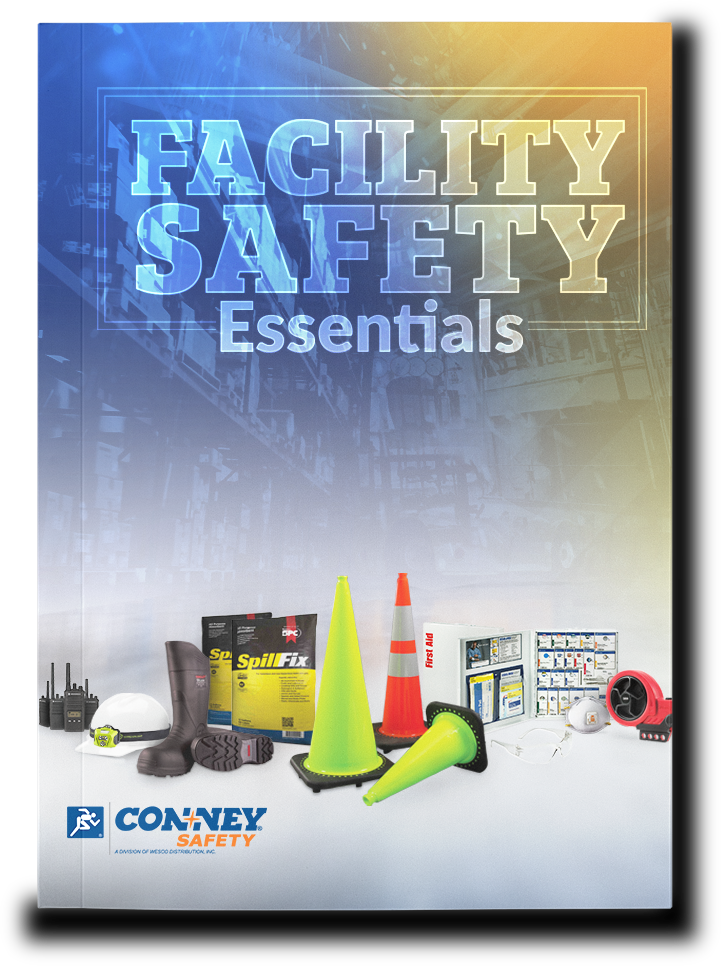Is Your Facility OSHA Compliant?
Download the Facility Essentials Catalog!

When OSHA visits a facility, typically the first observation they will make is with regard to general housekeeping of your facility. That means they're paying attention to hazard communications, signage, and visual warning barriers. If your facility checks all the boxes when it comes to general housekeeping, that tells OSHA that, at least on the surface, you keep your facility relatively in-line with proper safety protocol. Unfortunately, most workplaces don't check all the boxes.
Are you taking the proper steps to ensure this isn't the case for your facility?Did you know that studies have shown that signs that warn of dangers and hazards in the workplace can reduce accident rates as much as 80%? Be sure to regularly review your workplace for dangers and hazards that can be better identified through proper signage. If you work for a larger company, you may even want to consider an onsite walk-through in conjunction with a sign survey-many companies are surprised to discover that their facility signage, including exit signs and evacuation documentation, is pretty inadequate. Our Safety Services Team can help ensure hazard communication and signage is in compliance in your facility.
Customized Signs
We offer a variety of Direct Safety® signs that you can customize to reflect your facility's safety signage needs and goals.Customize your signs through the Conney Custom Configurator.
Signs are available in materials such as self-stick polyester, self-stick vinyl, plastic, aluminum, and fiberglass. Choose the material that works best for your environment.
Did you know that although some of the gloves in mechanics, impact, and anti-vibration categories appear to be very similar, there are some distinct features and requirements that set them apart for specific applications?
Impact gloves can be designed to address impacts to both the back and the palm side of the hand. Impact gloves with knuckle guards and impact pads on the back of the fingers are made to address impact to the dorsal (back) part of the hand and knuckles. These gloves will often have some type of padding on the palm as well.A question you may face on a number of work environments-both indoor and outdoor-is, "How well can others see me?" Wearing the proper amount of hi-vis apparel AND choosing the right color can sometimes mean the difference between life and death
Did you know that OSHA requires PPE assessments? Under the General Industry standards (1910.132-138), OSHA requires employers to conduct and document hazard assessments for each job (some refer to this as a JSA or Job Safety Analysis). It is both a regulation and a very basic safety principle; you have to know what the hazards are if you are going to protect employees from them.
Are first aid resources being properly utilized? We're here to help solve all your first aid needs. Conney has partnered with First Aid Only® to bring you innovative SmartCompliance® solutions, which redefine and streamline business first aid.
With SmartCompliance®, you get a first aid solution designed to benefit both you and your workers through ease-of-use and breadth of selection. With a proprietary design to specifically meet workplace first aid needs, SmartCom-pliance® provides you with complete control over what to order and when-not by employee quota. SmartCompliance® is easy to monitor and maintain with its patented SmartTab® indicator that tells you when and what to reorder.
Conney Safety has partnered with J.J. Keller & Associates, Inc., to bring you best-in-class safety training on a broad range of topics. Enhance your safety program and stay on top of regulatory compliance with these excellent training options. Backed by regulatory experts and using the latest techniques and technology, these training solutions give your employees the proper instruction they need.
Access training online 24/7. For self-paced learning, use Online Courses. For instructor-led training, use Video On-Demand. With either, you'll get up-to-date content developed by experienced training specialists.